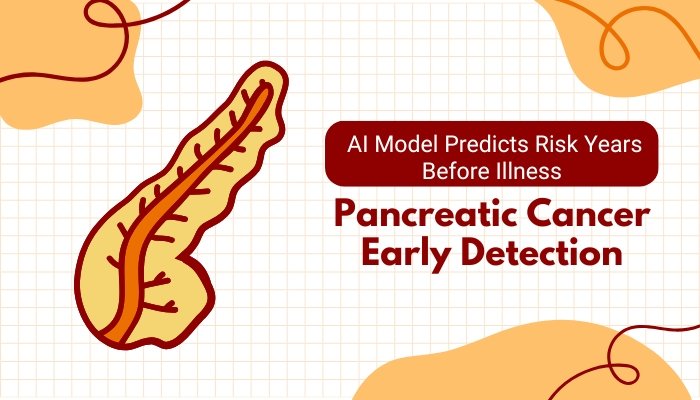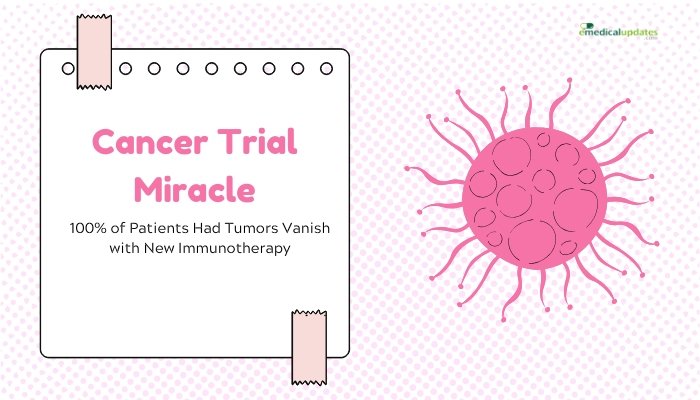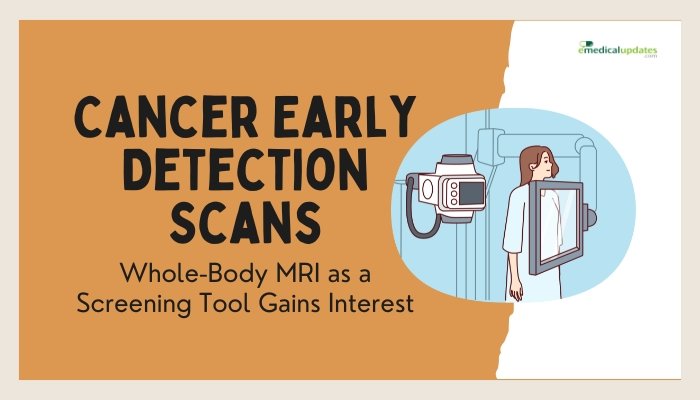Introduction
Pancreatic cancer has long been one of the most lethal malignancies, often discovered too late for effective treatment. Early detection, when tumors are still small and resectable, significantly improves survival—but current screening methods are either invasive or not cost-effective for large populations.
Now, a new AI-based model harnesses patient data to predict who might develop pancreatic cancer years before symptoms appear, potentially alerting clinicians to intervene earlier. In this article, we examine how this predictive AI works, its encouraging trial results, and the promise it holds for transforming pancreatic cancer outcomes.
Why Pancreatic Cancer Is So Hard to Catch Early
Late Diagnosis
Most pancreatic tumors grow silently until they invade nearby structures or spread, triggering vague symptoms like abdominal discomfort or weight loss. By then, the cancer is often advanced:
- Low 5-Year Survival: Under 10% overall, primarily due to delayed discovery.
- Lack of Effective Screening: No routine test (like colonoscopy or mammogram) widely recommended for average-risk individuals. Some high-risk people undergo imaging or endoscopic checks, but these can be costly and not always conclusive.
The Potential of AI in Risk Prediction
AI-driven tools can mine large datasets—electronic health records, genetic data, or lab results—to spot early signals or patterns that indicate a future malignancy. Pancreatic cancer, with its asymptomatic early stages, stands as an ideal candidate for an algorithm that identifies high-risk individuals.
Inside the New AI Model
Data Sources
To train the model, researchers often use:
- Electronic Health Records (EHR): Lab values, imaging reports, diagnoses, drug prescriptions over many years.
- Demographic and Genetic Factors: Age, family history, known germline mutations (e.g., BRCA2), or lifestyle factors like smoking.
- AI Architecture: Neural networks or advanced machine learning methods that handle complex, multi-dimensional data.
Key Features and Signals
The model might track subtle changes in blood tests (like rising CA 19-9 or changes in glucose), repeated mild GI complaints, or a pattern of prescription meds that hint at recurrent pancreatitis. By correlating these patterns with known future pancreatic cancer cases, the AI “learns” distinctive risk signatures.
Encouraging Trial Outcomes
Retrospective Validation
Researchers tested the model on historical patient records:
- Predictive Accuracy: The AI flagged a subset of patients who later developed pancreatic cancer, sometimes 2–3 years before clinical diagnosis.
- High Sensitivity/Specificity: Many who the model singled out did progress to disease, while it largely ignored those who remained cancer-free (though further refinements may reduce false positives).
Prospective Implementation
Some teams plan prospective studies where real-time EHR data triggers additional imaging or lab follow-ups for flagged individuals, measuring if earlier detection truly improves survival or resectability.
How It Could Transform Care
- Targeted Screening: Rather than scanning everyone, the AI identifies a high-risk fraction of the population for advanced imaging (like MRI or CT).
- Reduced Late Diagnosis: By catching suspicious patterns early, more patients might qualify for potentially curative surgery.
- Refined Resource Allocation: Healthcare systems can focus costly diagnostic tools on those with highest predicted risk, maximizing detection yield.
Limitations and Considerations
Data Quality and Bias
AI performance heavily relies on robust, diverse training datasets. If the data skews to a certain population, the model’s predictions may be less accurate for underrepresented groups.
Overdiagnosis or False Alarms
Some “high-risk” individuals flagged might never develop actual pancreatic cancer, leading to potential anxiety, unnecessary imaging, or invasive procedures. Striking a balance between early detection and avoiding overtreatment is key.
Regulatory and Ethical Aspects
Using EHR for predictive AI raises privacy and consent issues. Health authorities also want real-world prospective trials to confirm that earlier detection from AI truly reduces mortality.
Future Directions
Integration with Genetic Profiling
Combining the model’s risk scores with genetic screening (BRCA2, PALB2, or other relevant mutations) could yield an even more powerful risk stratification, particularly for familial pancreatic cancer.
Ongoing Large-Scale Trials
Multicenter trials analyzing tens of thousands of patients over years will confirm how often the AI’s “early flags” produce a treatable cancer, refining sensitivity/specificity. Standard guidelines for usage might follow.
Extending to Other Cancers
Success with pancreatic cancer models may spur similar approaches for tricky cancers like ovarian or liver—where routine screening is also limited. The more data these models gather, the more robust they become for multiple diseases.
Frequently Asked Questions
- Is this AI already used in clinics?
- Not extensively. Some institutions pilot it in research settings. Widespread adoption depends on further validation and regulatory endorsement.
- How accurate is it in predicting actual cancer?
- Preliminary results are promising, but the exact accuracy (sensitivity/specificity) might vary. Large-scale prospective data is needed for precise metrics.
- What happens if I’m flagged as high-risk?
- Typically, your doctor might order imaging (CT/MRI) or specialist referral to investigate any precancerous changes. This could lead to early intervention if something suspicious is found.
- Does the AI read imaging scans directly?
- This approach primarily mines EHR data – test results, diagnoses, and so forth. Some advanced solutions also incorporate imaging analysis, but that’s a separate or combined pipeline.
- Will it replace standard check-ups for those with a family history of pancreatic cancer?
- Likely it’ll be an adjunct. Genetic counseling and routine imaging remain essential for families with strong histories of the disease.
Conclusion
An AI model that predicts pancreatic cancer risk years in advance marks a critical advance for a disease known for silent progression and late detection. By sifting through vast EHR data, it can spotlight subtle warning signs that precede symptomatic or imaging-detectable tumors, potentially empowering doctors to intervene earlier and improve outcomes. While challenges—like refining accuracy, ensuring data quality, and preventing undue anxiety for false positives—remain, the approach signals a shift from reactive to proactive care in one of the most deadly cancers.
Ultimately, if validated by large-scale prospective trials, these AI-driven risk assessments could become a standard tool in routine healthcare, identifying high-risk individuals for advanced screening, fostering more timely surgeries, and hopefully saving lives from a disease notorious for its stealth.
References
-
GLOBOCAN (2023). “Global pancreatic cancer incidence and mortality estimates.”
-
Kleeff J, et al. (2017). “Pancreatic cancer: from understanding to emerging therapeutic strategies.” Nat Rev Gastroenterol Hepatol.
-
AI Diagnostics in Oncology Consortium. (2022). “Retrospective analyses of EHR-based AI model for pancreatic cancer risk.”
-
WHO. (2023). “Early detection approaches for high-burden malignancies.”







